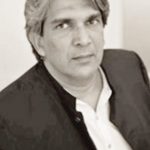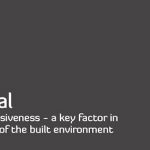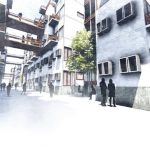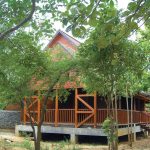-
Touching the Earth Lightly: Glenn Marcus Murcutt
October 2013

Glenn Murcutt stands out as someone who designs innovative residences for the Australian climate. His approach arises from the landscape, often treated sacred. Murcutt generates concepts from the landscape, experimenting with materials, light, wind and other characteristics of each site. His philosophy comes from a careful study of the qualities of the landscape and its flora, which he celebrates.
By Sumedha Dayaratne
Murcutt uses easy-to-produce, inexpensive, durable materials sourced locally. His residences shun air conditioning and gas or electric heat, for geothermal energy whenever possible. Adjustable eaves and blinds keep the heat out. Sophisticated air-circulation systems allow maximum airflow. Windows are positioned to catch sunlight. Often, he overlaps layers of roofing to increase natural ventilation. His buildings, open to Nature, responding to its natural beauty and heating and cooling cycles. Drew in 2000 wrote,“A building should be able to open up and say ‘I am alive and looking after my people’ or instead, ‘I’m closed now and I’m looking after my people as well’. This to me is the real issue. Buildings should respond, they should open and close and modify and re-modify, and blinds should turn and open and close, open a little bit without complication. That is a part of architecture for me; all this makes a building live.”
Murcut builds in the idioms of modernism with a conscious attitude for people and Nature; dwelling with earth, sky, and mortals. However, Murcutt’s work shares with postmodernism in its emphasis on inexpensive materials such as corrugated metal, mesh screen, and unfinished wood. It is not a postmodernism in service of market, but a minimalism for ecological considerations. Murcut employs four principles constantly; using simple materials, following the sun, listening to the wind and touching the earth lightly.
Marie Short House is a classic example. It is built with a corrugated metal roof, enameled steel window louvers, and wood walls utilising materials from a nearby sawmill. Exotic woods, often endangered, are out, as is marble or brass, which are too costly, require excessive processing, and are rarely energy efficient.
Murcutt burrows from the great modernist Mies van der Rohe, whose assertion that ‘God is in the details’ bespoke a modernist preoccupation with truth and integrity in form and structure. Mies took technology to its spiritual heights, attempting to demonstrate that careful thinking and rigorous technical planning reveals the essence of a building. Miesian structures do not lie, they are classic examples of another modernist slogan, ‘form follows function’. There is no ornamentation, no superfluity, and no waste in a Miesian plan. Instead of spiritual flourishes tacked on to the outside of the structure, there is an innate spirituality in the careful and rigorous design, the meticulous choice of materials, and the precision and economy with which they are combined to form a building. Indeed, God is in the details.
Murcutt’s work, rather than spiritualising technology, seeks to use the smartest, leanest, most efficient design to preserve the earth. He touches the earth lightly by building on stilts and other supports. His modernism is not the vision of the early Twentieth Century that implied technology could be an end in-itself, a pathway to the new utopia. For Murcutt, technology and efficiency come together with beauty of Nature.
In 2002, he was awarded the Pritzker Prize, when Chairman Carter Brown, noted, “Our laureate works in a one-person office on the other side of the world from much of the architectural attention, yet he has a waiting list of clients, so intent is he to give each project his personal best. He is an innovative architectural technician who is capable of turning his sensitivity to the environment and to locality into forthright, totally honest, non-showy works of art.”













